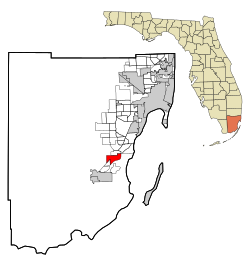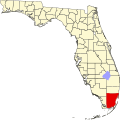2020 census
As of the 2020 United States census, there were 39,308 people, 8,356 households, and 7,058 families residing in the CDP. [13]
As of the 2010 United States census, there were 22,038 people, 5,688 households, and 4,807 families residing in the CDP. [14]
2000 census
As of the census [3] of 2000, there were 10,090 people, 2,732 households, and 2,341 families residing in the CDP. The population density was 1,373.3 inhabitants per square mile (530.2/km2). There were 2,906 housing units at an average density of 395.5 per square mile (152.7/km2). The racial makeup of the CDP was 53.78% White (18% were Non-Hispanic White), [15] 32.54% African American, 0.34% Native American, 1.37% Asian, 0.06% Pacific Islander, 7.70% from other races, and 4.22% from two or more races. Hispanic or Latino of any race were 47.49% of the population.
As of 2000, there were 2,732 households, out of which 52.4% had children under the age of 18 living with them, 56.8% were married couples living together, 22.4% had a female householder with no husband present, and 14.3% were non-families. 10.0% of all households were made up of individuals, and 2.3% had someone living alone who was 65 years of age or older. The average household size was 3.63 and the average family size was 3.85.
In 2000, in the CDP, the population was spread out, with 36.1% under the age of 18, 10.2% from 18 to 24, 30.0% from 25 to 44, 17.7% from 45 to 64, and 6.0% who were 65 years of age or older. The median age was 28 years. For every 100 females, there were 97.0 males. For every 100 females age 18 and over, there were 92.6 males.
In 2000, the median income for a household in the CDP was $39,556, and the median income for a family was $41,896. Males had a median income of $32,101 versus $23,634 for females. The per capita income for the CDP was $12,918. About 19.8% of families and 23.8% of the population were below the poverty line, including 33.1% of those under age 18 and 14.4% of those age 65 or over.
As of 2000, speakers of English as a first language accounted for 50.02% of residents; Spanish made up 49.24%, and French Creole was the first language for 0.72% of the population. [16]



